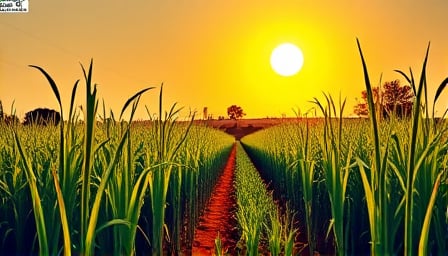Sugar Market Dynamics: A Sweet Surge Amidst US Demand Hopes
In a notable development for the sugar market, prices have experienced a significant uptick, driven by optimistic projections of increased US demand. On July 17, 2025, both New York and London sugar futures closed higher, with October NY world sugar #11 (SBV25) rising by 0.18 (+1.09%) and October London ICE white sugar #5 (SWV25) climbing by 5.50 (+1.15%). This surge pushed sugar prices to 1.5-month highs, reflecting a bullish sentiment among traders and investors.
The primary catalyst behind this rally is the anticipated boost in US sugar demand. Market analysts attribute this optimism to recent statements by President Trump, suggesting that major beverage companies, including Coca-Cola, are considering a shift to cane sugar in their products sold in the US. This potential shift has sparked a flurry of activity in the sugar markets, as traders anticipate increased demand for cane sugar.
However, the proposed transition to cane sugar is not without its challenges. Reports indicate that such a move could be costly for beverage companies and may adversely impact US farmers. The reliance on domestically produced beet sugar means that a switch to cane sugar could disrupt the agricultural sector, leading to economic repercussions for farmers who have traditionally supplied the US market.
Despite these concerns, the market remains focused on the potential for increased sugar consumption in the US. The shift towards cane sugar, reminiscent of the formula used in Mexican Coke, has generated mixed reactions. While some consumers express enthusiasm for the change, others, particularly those with Mexican heritage, remain skeptical, citing a preference for the current formula.
In the broader context, Brazil’s sugar mills are closely monitoring these developments, wary of potential fallout from the US ethanol probe. The interconnectedness of the sugar and ethanol markets means that any shifts in US policy could have far-reaching implications for global sugar producers.
As the sugar market navigates these complex dynamics, investors and stakeholders are advised to keep a close eye on policy developments and consumer trends. The potential for increased US demand presents opportunities, but also underscores the need for careful consideration of the broader economic and agricultural impacts.
In conclusion, the sugar market is poised at a critical juncture, with hopes of stronger US demand driving prices higher. The proposed shift to cane sugar by major beverage companies adds a layer of complexity, highlighting the delicate balance between market opportunities and the potential challenges facing US farmers. As the situation evolves, the sugar market will continue to be a key area of interest for investors and industry observers alike.
